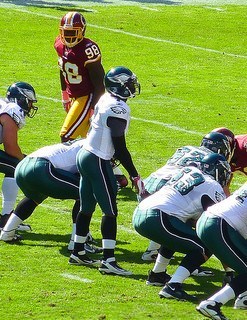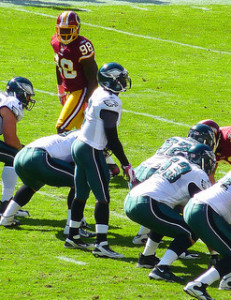Definition
A team leader is an individual who may or may not have authority to advise team members with instruction and direction on processes necessary to achieve objectives. A team leader provides direction by examining a variety of assessments. Measures may include listening to follower concerns and problems team members may encounter.
Team leaders facilitate dialogue between team members and people who have more authority. Team leaders are responsible for decisions on behalf of the group when no consensus is present. The team leader is an influential team member who can interject during times of conflict. When a team leader is successful, they will understand strengths and weaknesses of other members and organize team efforts.
Qualities of Team Leader
There are a number of basic team leader roles, which include leading by example, asking questions, understand job duties, motivate team members, facilitate communication, and monitor performance.
One of the most symbolic acts a team leader can do is lead by example. When a team leader leads by example, they are setting the tone along with the standard for team members. The leader must also act on behalf of the team while supporting them to show appreciation for their efforts.
One of the roles a team leader does is ask challenging questions. Asking questions help to understand actions and thoughts. Questions can be motivational at times, or they can be risky and disrupt the status quo.
Team leaders should have a fundamental understanding of job duties. It is advantageous for a team leader to understand the job functions to build a connection with the team rather than just appearing like a dictator. Individuals are able to be leaders when they are knowledgeable so it is best when they are proactive to stay abreast of new industry knowledge, so they can help the team adjust to changes.
Since team members look to their leaders for inspiration, when the leader provides motivation, they are able to be catalysts of action. Passionate leaders can transfer their energy to team members. Team members can demonstrate their passion is by recognizing team members who excel.
Leaders who know how to communicate effectively can enhance their authority level. Team members need direction, so they can pursue goals and understand of their efforts contribute to team achievements. Additionally, due to the authority the leader possesses, they are in positions to solve problems and conflicts. Moreover, when leaders have the capability to relate to the team members by using their communication skills, leaders can deliver feedback that supports team members with effective results.
Leader follower relationships also build trust. When trust is present, leaders can set attainable expectations for team members without close supervision. Empowering team members who possess the essential skills reduce the need for micro management. Nevertheless, when the leader monitors the team and performance, they are able to respond and intervene when required.
Responsibilities
One of the primary responsibilities of a team leader is to alleviate responsibilities for higher-level managers. The additional benefit from an organizational perspective is that save the company money as this role typically does not pay much beyond that of other team members.
The team leader facilitates communication between the team and upper management. This responsibility includes performance updates, attending meetings, and conflict resolution. The responsibility of conflict resolution cannot be overstated. As a leader, team members look to this individual for direction, motivation, and answers. How the team leader responds in different conditions can influence the behavior of their followers. Having an understanding of team strengths helps the team leader to organize the team to reach objectives.
When the team leader leads by example, they have the power to establish standards for the team. On the other hand, when standards are either not met or the team fails to reach their goals, the team leader if apt to be responsible for this shortcoming. For this reason, team leaders should have a strong working relationship with higher-level executives, so they can determine the best strategy for goal achievement.
The team leader may have human-resource management responsibilities include providing performance evaluations. Moreover, their role in the organization along with their influence on the team is helpful in team member decisions when it comes to hiring and firing of team members. Along with the responsibility of hiring and firing comes formal training of new team members. The team leader’s input typically has more weight than others do on the team in the minds of higher-level leaders. The input by team leaders may influence decisions regarding other team members.
Training and Development
There are a number of ways to receive training and development to become a team leader or excel at the position. For example, those who have an interest in becoming a team leader can pursue formal education, in-house training and development opportunities from your organization, workshops, reading, and a number of other manners. When deciding on what types of training and development opportunities are best you should consider methods that address these skill sets.
Skill Sets for Leaders
- Communication- As a leader you must be able to use both verbal and non-verbal skills. Communication is at the heart of becoming a leader. Anything you can do to work on developing your communication skills will prove to be beneficial.
- Organization is an important asset for a leader. Organization helps you as a leader when developing a strategic approach to goal accomplishment. As a leader, organizational skills help in your ability to delegate tasks. Organization speaks to your overall ability to prepare yourself.
- After working on developing your leadership skills you must have confidence in yourself. Followers can see when you are confident in your abilities. Additionally, you should take the time to understand your followers so you have confidence in their abilities. This confidence really comes through when you empower followers to take action and decisions.
- When times get challenging there will be times when you need to serve as a facilitator and broker negotiations between parties. You will also need to facilitate the relationship between team members and executives. Facilitating will help others and yourself to put things in perspective and allow followers to see how their work contributes to the goals of the organization. Furthermore, negotiation skills play a role in decision-making and conflict resolution.
Resources


